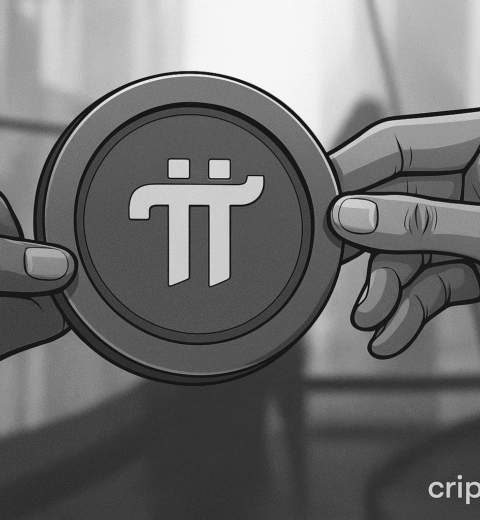Blockchain technology is no longer just a buzzword tied to Bitcoin—it’s a game-changer reshaping how we live, work, and interact. In 2025, the real-world use cases of blockchain technology in 2025 are expanding across industries, from finance to healthcare, making processes faster, safer, and more transparent. This blog dives deep into the most impactful real-world use cases of blockchain technology in 2025, explaining each application with a human touch in simple English. Whether you’re new to blockchain or curious about its potential, this guide will show you how it’s revolutionizing the world.
Let’s explore the real-world use cases of blockchain technology in 2025 and see why this technology is here to stay.
What is Blockchain Technology?
At its core, blockchain is a digital ledger that records transactions securely and transparently. Imagine a notebook where every page is shared across thousands of computers, and once you write something, it can’t be erased or changed without everyone agreeing. This makes blockchain tamper-proof, decentralized, and trustworthy.
In 2025, the real-world use cases of blockchain technology in 2025 are growing because of its key features:
- Security: Data is encrypted and nearly impossible to hack.
- Transparency: Everyone can see the records, building trust.
- Decentralization: No single entity controls the system.
- Efficiency: Cuts out middlemen, saving time and money.
Now, let’s dive into the top real-world use cases of blockchain technology in 2025 and how they’re transforming industries.
Top 7 Real-World Use Cases of Blockchain Technology in 2025
1. Financial Services: Faster, Cheaper Transactions
Blockchain started with finance, and in 2025, it’s still a leader among the real-world use cases of blockchain technology in 2025. Banks and financial institutions are using blockchain to make transactions faster, cheaper, and more secure.
How It Works
Blockchain enables peer-to-peer transfers without intermediaries like banks or payment processors. For example, cross-border payments that once took days now take minutes. Companies like Ripple use blockchain to settle international transactions instantly.
Why It Matters
- Cost Savings: Reduces fees for transfers and remittances.
- Speed: Transactions are processed in real-time.
Example
JPMorgan’s Onyx platform uses blockchain for instant settlements. In 2025, it’s processing billions in transactions daily, saving costs for banks and customers.
Source: JPMorgan Onyx
YouTube Reference: Watch How Blockchain is Transforming Finance for a beginner-friendly explanation.
2. Supply Chain Management: Transparency and Trust
Supply chain issues—like fraud, delays, and counterfeit goods—are being tackled by blockchain in 2025. This is one of the most practical real-world use cases of blockchain technology in 2025, ensuring products move from factory to consumer transparently.
How It Works
Blockchain creates a permanent record of every step in the supply chain. Each product gets a digital ID, tracked from origin to delivery. Consumers can scan a QR code to see a product’s journey.
Why It Matters
- Fraud Prevention: Verifies authenticity, reducing counterfeits.
- Efficiency: Streamlines logistics, cutting delays.
- Consumer Trust: Buyers know exactly where their goods come from.
Example
Walmart uses IBM’s Food Trust blockchain to track fresh produce. In 2025, this ensures food safety by tracing items like lettuce back to the farm in seconds.
Source: IBM Food Trust
X Reference: Check
IBM Blockchain’s X posts for supply chain updates.
3. Healthcare: Secure Patient Records
Healthcare is a standout among the real-world use cases of blockchain technology in 2025, especially for managing patient data securely and efficiently.
How It Works
Blockchain stores patient records in a decentralized, encrypted ledger. Only authorized parties (like doctors or patients) can access them using private keys. This ensures privacy and prevents data breaches.
Why It Matters
- Privacy: Protects sensitive medical information.
- Interoperability: Allows hospitals to share records securely.
- Accuracy: Reduces errors in medical histories.
Example
In 2025, companies like MedRec use blockchain to give patients control over their health data, letting them share it with doctors instantly while keeping it secure.
Source: MedRec
4. Voting Systems: Secure and Transparent Elections
Elections face challenges like fraud and mistrust. In 2025, one of the real-world use cases of blockchain technology in 2025 is making voting systems secure and verifiable.
How It Works
Blockchain creates an unchangeable record of votes. Each vote is encrypted and stored on a decentralized ledger, ensuring it can’t be altered. Voters can verify their vote was counted correctly.
Why It Matters
- Security: Prevents tampering and hacking.
- Transparency: Public ledgers show vote counts without revealing identities.
- Trust: Builds confidence in election results.
Example
In 2025, states like West Virginia are piloting blockchain-based mobile voting for overseas citizens, ensuring secure and accessible elections.
Source: Voatz
5. Real Estate: Streamlined Property Transactions
Buying or selling property is often slow and paperwork-heavy. Blockchain is simplifying this, making it one of the real-world use cases of blockchain technology in 2025.
How It Works
Blockchain records property deeds, ownership history, and contracts on a secure ledger. Smart contracts—self-executing agreements—automate tasks like transferring ownership once payment is made.
Why It Matters
- Speed: Cuts closing times from weeks to days.
- Cost: Reduces fees for agents and notaries.
- Transparency: Prevents fraud in property records.
Example
Propy, a blockchain-based real estate platform, allows buyers to purchase homes with crypto and records deeds on the blockchain, streamlining the process.
Source: Propy
YouTube Reference: See Blockchain in Real Estate for a quick overview.
6. Digital Identity: Secure and Self-Sovereign
Identity theft and data breaches are major concerns. In 2025, one of the real-world use cases of blockchain technology in 2025 is creating secure digital identities.
How It Works
Blockchain-based identity systems let individuals control their personal data. Instead of sharing sensitive info with every service, you share only what’s needed via encrypted keys.
Why It Matters
- Privacy: You decide who sees your data.
- Security: Reduces risks of identity theft.
- Convenience: One digital ID works across platforms.
Example
Microsoft’s ION project, built on Bitcoin’s blockchain, lets users manage their digital IDs securely, from passports to login credentials.
Source: Microsoft ION
7. Intellectual Property Protection: Safeguarding Creativity
Artists, musicians, and creators face challenges protecting their work. Blockchain is solving this, making it one of the real-world use cases of blockchain technology in 2025.
How It Works
Blockchain records ownership and timestamps for digital creations, like music or art, using non-fungible tokens (NFTs) or smart contracts. This proves authenticity and prevents theft.
Why It Matters
- Ownership: Creators retain control of their work.
- Royalties: Smart contracts ensure automatic payments when work is used.
- Transparency: Provenance is clear to buyers and creators.
Example
In 2025, platforms like Audius use blockchain to let musicians publish songs and earn royalties directly, bypassing traditional middlemen.
Source: Audius
X Reference: Follow
Audius on X for creator-focused blockchain updates.
Comparison Table of Real-World Use Cases of Blockchain Technology in 2025
| Industry | Use Case | Key Benefits | Example Platform |
|---|---|---|---|
| Financial Services | Instant transactions | Speed, cost savings, inclusion | JPMorgan Onyx |
| Supply Chain | Transparent tracking | Fraud prevention, efficiency | IBM Food Trust |
| Healthcare | Secure patient records | Privacy, interoperability | MedRec |
| Voting | Secure elections | Security, transparency | Voatz |
| Real Estate | Streamlined transactions | Speed, cost reduction | Propy |
| Digital Identity | Self-sovereign IDs | Privacy, security | Microsoft ION |
| Intellectual Property | Protecting creative work | Ownership, royalties | Audius |
Why Blockchain Matters in 2025
In 2025, the real-world use cases of blockchain technology in 2025 are thriving due to:
- Increased Adoption: More businesses and governments trust blockchain.
- Better Technology: Faster, scalable blockchains like Ethereum 2.0.
- Regulation: Clearer U.S. laws make blockchain safer to use.
- Public Awareness: People understand blockchain beyond crypto.
These factors make the real-world use cases of blockchain technology in 2025 more accessible and impactful than ever.
Challenges of Blockchain in 2025
While the real-world use cases of blockchain technology in 2025 are exciting, challenges remain:
- Scalability: Some blockchains struggle with high transaction volumes.
- Energy Use: Proof-of-work blockchains like Bitcoin consume significant energy.
- Regulation: Varying global laws create complexity.
- Adoption: Some industries are slow to embrace blockchain.
Despite these hurdles, innovations like layer-2 solutions and eco-friendly blockchains are addressing them, making 2025 a pivotal year.
Tips for Exploring Blockchain Use Cases
- Stay Informed: Follow blockchain news on platforms like X to learn about new applications.
- Start Small: Experiment with blockchain-based apps like wallets or NFT platforms.
- Research Projects: Check official websites for transparency and credibility.
- Understand Risks: Be aware of security and regulatory challenges before diving in.
X Reference: Explore
CoinDesk’s X posts for the latest blockchain trends.
Conclusion
The real-world use cases of blockchain technology in 2025 are transforming industries and making life more secure, transparent, and efficient. From speeding up financial transactions to protecting patient data and securing elections, blockchain is proving its worth beyond cryptocurrencies. As the USA leads in blockchain adoption, these applications are becoming mainstream, offering opportunities for businesses and individuals alike.
Embrace the real-world use cases of blockchain technology in 2025 by exploring platforms like Propy, Audius, or IBM Food Trust. With blockchain, the future is not just digital—it’s decentralized and empowering.
FAQs:
What are the top real-world use cases of blockchain technology in 2025?
Key use cases include financial services, supply chain transparency, healthcare records, secure voting, real estate transactions, digital identity, and intellectual property protection, all leveraging blockchain’s security and transparency.
How does blockchain improve supply chains in 2025?
Blockchain tracks products from origin to delivery, reducing fraud and ensuring authenticity. Platforms like IBM Food Trust make supply chains transparent, boosting trust and efficiency in 2025.
Is blockchain safe for healthcare data in 2025?
Yes, blockchain secures patient records with encryption and decentralization. Solutions like MedRec give patients control over their data, ensuring privacy and interoperability across hospitals.
Can blockchain make voting more secure in 2025?
Blockchain ensures tamper-proof voting records, as seen in platforms like Voatz. It enhances transparency and trust, making elections more secure and verifiable in 2025.




